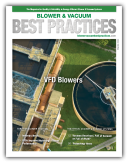Improved Vacuum Supply Conserves Energy at Meat Processing Operations
The right vacuum solution not only ensures product quality in meat processing operations; it also helps companies achieve important sustainability goals. Such is the case at two leading meat processing companies in Germany, both of whom added Busch Vacuum Pumps and Systems solutions to their operations and saved energy and more as a result.


